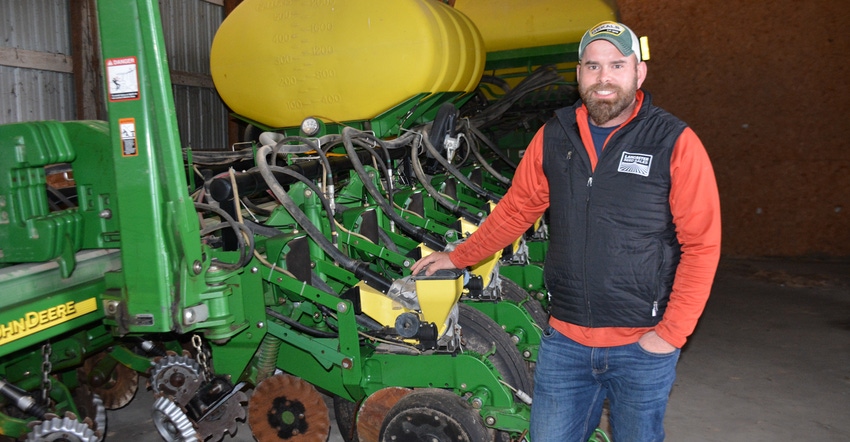
Karl Dirks is all wrapped up with harvest on his 1,000-acre farm in Lancaster County, Pa. Now, he’s looking forward to winter maintenance.
"We pull everything through the shop in the winter,” he says. “We'll start the big-ticket items in December. Kind of pull everything in, just look at, order all the parts in before the end of the year, take advantage of some discount programs. We'll get through everything through the beginning of March is the general idea.”
Dirks and his crew do all their work in the shop on the farm in Mount Joy. He grows 550 acres of corn, 200 acres of small grains, 180 acres of soybeans, and he does all his own planting, combining and field work. He has three guys working for him.
He is “green,” operating a John Deere 1770NT corn planter, a 30-foot air seeder, a S660 combine and two 8R tractors. His front boom sprayer is a New Holland model.
Maintenance differs by machine, of course. With his 8R tractors, he’ll take them through a good wash cycle, clean everything up, change the fluids, make sure oils are up to date and topped off, and that the tire pressures are checked.
As soon as he’s done with the combine, he blows it off with an air compressor. He has a maintenance chart he follows, which he found and downloaded off the internet.
When it comes to the combine, replacing belts are crucial.
“We’re getting to the age where we’re starting to have to replace quite a few belts on that one,” he says. “The combine itself is nine years old.”
He’ll make sure variable-rate drives are good. Then he’ll drag the headers in and check those. His planter, though, is the one that gets most of his attention.
“The planter is the one I’m most picky with. That’s the one I really like,” he says.
He’ll tear it down, replace wear items and even check on some custom items he’s built specifically for the planter. Seed disks and seed firmers are almost always replaced, he says. Closing wheel bearings are also checked.
The parallel arms were replaced two years ago, he says, so that’s good for a while. He also double checks for leaks, makes sure everything is calibrated and tight, and makes sure the seed tubes don’t have cracks.
Start early, end early
Jim Franceschetti, product marketing manager of crop harvesting, hay and forage for New Holland, says that now is the time to get ready for winter maintenance.
“Nobody wants to bring something out in spring that might have issues off the bat, so do it sooner than later,” he says. “Being prepared and handling things now prior to next season is always a good recommendation.”
First, start with cleaning.
"Don't be bashful with that piece of equipment,” he says. “As it's worked through the entire season there is ample opportunity for things to build up, whether it's rocks or residue from the ground or maybe a part wore, or shredded, and you didn't realize it.”
“It's getting into everything and kind of opening everything up and exposing everything, getting under the machine and the sides of the machine, really give it a thorough inspection because we know as that thing is used, the field conditions can be rough and can wreak havoc on the equipment, so I would leave nothing unturned.”
He recommends compressed air since you don’t want to get water on electronic components. Pressure washing, though, can be used to clean off exteriors and ground-engaging components.
Chemicals and cleansers are OK, he says, but use them sparingly.
“Stay away from a cleaner that’s super abrasive or corrosive. You can potentially do more harm than good,” he says.
Thinking of draining the fuel? That depends. With a combine, he doesn’t recommend it because of the sheer size of the machine with lots of components.
When it comes to self-propelled wind rowers and balers, he recommends lubing and greasing them up. For combines, it’s very similar thinking, he says.
Don't forget about the headers, either. You need to look for damage to cutting parts or sharp edges, and pieces that engage the ground.
And if you need to get service? Call ahead and make those plans now.
“I wouldn’t wait,” he says. “I wouldn’t waste any time on this. The recommendation is always, when you’ve done that last field or last acre, start with your maintenance.”
About the Author(s)
You May Also Like






